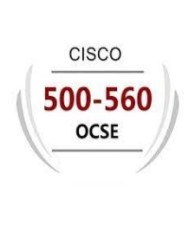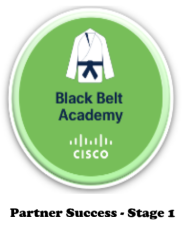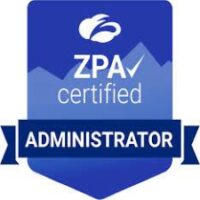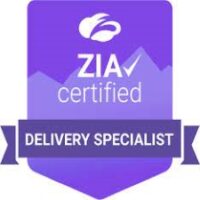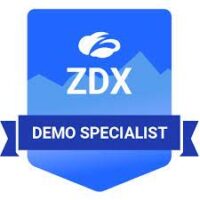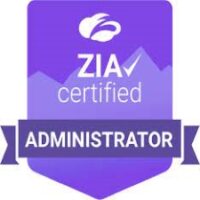Our recent Zscaler User Group Event at Hijingo in London was once more a testament to the power of collaboration, bringing together over 55 customers for a day of networking, information sharing, and open discussions on how to navigate the evolving landscape of Zero Trust security. As a customer-only event, a user group meeting is designed to foster meaningful dialogue, with an agenda that encourages peer learning, exchange of experiences, and exploring best practices together. In addition to the customer-led sessions that focussed on individual organizations’ Zero Trust transformation journeys, and a session from our Customer Success team on ‘Zero Trust Beyond Remote Work,’ these events truly thrived on the personal exchanges between participants.Key take aways from real-world Zero Trust experiencesThe day’s standout moments are usually the fireside chats amongst customers. These conversations offer candid, real-world insights into both the challenges and successes of implementing Zero Trust across organizations. Interestingly, the key takeaway this year wasn’t technical at all. Customers consistently emphasised that aligning stakeholders, securing executive buy-in, and shifting organizational mindsets are the true foundations of a successful Zero Trust journey. To drive this transformation, it is essential to clearly demonstrate the RIO of a Zero Trust approach by focussing on leadership priorities such as cost reduction and security simplification.As multi-cloud environments grow increasingly complex, organizations are finding it difficult to maintain visibility and control – unless they can unify their data streams through a centralized dashboard. Once they transition to a cloud-based Zero Trust platform, the next challenge often lies in managing Zero Trust across distributed, virtual teams. This shift highlights the need to upskill teams to effectively handle the new security paradigm. This opening session brought a key theme into focus: Zero Trust is as much about operational and cultural transformation as it is about technology. AI, Risk, and the Zero Trust Journey Inspiration provided the session on AI governance in a Zero Trust world. It served as a timely wake-up call for organizations to take a proactive stance on defining AI security policies before security gaps have a chance to emerge. As AI adoption accelerates, so do the challenges around governance, security, and risk management. The session explored how businesses must strike a careful balance between innovation and security, ensuring AI-driven progress boosts productivity without introducing unnecessary risk. As employees will always try to find a way to boost their productivity with the help of AI, organizations have to understand usage patterns of the tools. Only by identifying how employees interact with AI, will they be able to counterfeit the associated risks of the modern ways of working. The recently launched ThreatLabZ 2025 AI security report showed an explosion of AI/ML transactions in the Zscaler cloud with a 3,464.6% year-over-year increase, highlighting the massive growth of enterprise AI adoption. However, AI can be a double edged sword that enables not only a productivity boost, accelerated decision-making, and automated workflows, but cybercriminals are using the same technology to automate and scale more sophisticated attacks. From hyper-realistic deepfakes to advanced vishing scams, AI-generated threats have quickly raised the stakes for enterprise security.According to the report, blocking is the immediate reaction to the emerging threat landscape. With 59% of AI/ML transactions prohibited by enterprises, this signals concerns over data security and the uncontrolled use of AI applications. However, blocking AI-related transactions is only a reaction and not a strategy. Organizations must work to establish AI governance frameworks to ensure AI use is controlled without stifling innovation or user productivity. A risk-based approach that centers around protecting critical assets must begin with a clear classification of the AI tools in use. This foundational step enables IT teams to define precise policies for sanctioned, tolerated, and unsanctioned AI applications. Building on this session, much of the discussion within the user group centered around governance strategies for effectively managing AI-related risks. Fireside Chat: From Strategy to SuccessParticipants also gained valuable insights from peers who shared real-world lessons on implementing Zero Trust in complex environments. The fireside chat highlighted the critical role of cross-functional collaboration in successfully adopting and scaling Zero Trust strategies. One customer shared how they streamlined their security architecture by consolidating firewalls and proxies through the Zscaler cloud – simplifying their toolset while maintaining robust protection. At the same time, they focused on strengthening business continuity by enhancing resilience and improving incident response as part of their disaster recovery planning – a topic that resonated strongly throughout the day’s discussions. While the customer conversations were front and center, Zscaler closed the event with a session on Zero Trust beyond Remote Work. It showcased how the Zscaler cloud platform continues to evolve, enabling organizations to extend Zero Trust principles to all networks and devices, regardless of location. Emphasis was placed on securing all traffic through the Zscaler platform using tools like Client Connector, App Connector, and Private Service Edge. Together, these components help build a resilient Zero Trust architecture that supports granular access controls based on user identity, device posture, and business context. The key message was clear: Zero Trust isn’t just for remote work – it must be embedded across the entire enterprise to effectively replace broad network access with precise, application specific segmentation. In conclusion, our customers’ experiences highlight that Zero Trust is not a one-time project, but an ongoing journey that hinges on stakeholder alignment and strong cross-functional collaboration. As organizations adopt AI, security teams must take a proactive stance, implementing governance frameworks while maintaining visibility and control across increasingly complex multi-cloud environments. Close partnership with product teams also plays a vital role in unlocking the full value of new capabilities. By actively listening to and building alongside our customers, we can guide them through every step of their Zscaler journey and help ensure lasting, successful transformations. Because in the end Zero Trust isn’t a destination – it’s a continuous journey.
[#item_full_content] Our recent Zscaler User Group Event at Hijingo in London was once more a testament to the power of collaboration, bringing together over 55 customers for a day of networking, information sharing, and open discussions on how to navigate the evolving landscape of Zero Trust security. As a customer-only event, a user group meeting is designed to foster meaningful dialogue, with an agenda that encourages peer learning, exchange of experiences, and exploring best practices together. In addition to the customer-led sessions that focussed on individual organizations’ Zero Trust transformation journeys, and a session from our Customer Success team on ‘Zero Trust Beyond Remote Work,’ these events truly thrived on the personal exchanges between participants.Key take aways from real-world Zero Trust experiencesThe day’s standout moments are usually the fireside chats amongst customers. These conversations offer candid, real-world insights into both the challenges and successes of implementing Zero Trust across organizations. Interestingly, the key takeaway this year wasn’t technical at all. Customers consistently emphasised that aligning stakeholders, securing executive buy-in, and shifting organizational mindsets are the true foundations of a successful Zero Trust journey. To drive this transformation, it is essential to clearly demonstrate the RIO of a Zero Trust approach by focussing on leadership priorities such as cost reduction and security simplification.As multi-cloud environments grow increasingly complex, organizations are finding it difficult to maintain visibility and control – unless they can unify their data streams through a centralized dashboard. Once they transition to a cloud-based Zero Trust platform, the next challenge often lies in managing Zero Trust across distributed, virtual teams. This shift highlights the need to upskill teams to effectively handle the new security paradigm. This opening session brought a key theme into focus: Zero Trust is as much about operational and cultural transformation as it is about technology. AI, Risk, and the Zero Trust Journey Inspiration provided the session on AI governance in a Zero Trust world. It served as a timely wake-up call for organizations to take a proactive stance on defining AI security policies before security gaps have a chance to emerge. As AI adoption accelerates, so do the challenges around governance, security, and risk management. The session explored how businesses must strike a careful balance between innovation and security, ensuring AI-driven progress boosts productivity without introducing unnecessary risk. As employees will always try to find a way to boost their productivity with the help of AI, organizations have to understand usage patterns of the tools. Only by identifying how employees interact with AI, will they be able to counterfeit the associated risks of the modern ways of working. The recently launched ThreatLabZ 2025 AI security report showed an explosion of AI/ML transactions in the Zscaler cloud with a 3,464.6% year-over-year increase, highlighting the massive growth of enterprise AI adoption. However, AI can be a double edged sword that enables not only a productivity boost, accelerated decision-making, and automated workflows, but cybercriminals are using the same technology to automate and scale more sophisticated attacks. From hyper-realistic deepfakes to advanced vishing scams, AI-generated threats have quickly raised the stakes for enterprise security.According to the report, blocking is the immediate reaction to the emerging threat landscape. With 59% of AI/ML transactions prohibited by enterprises, this signals concerns over data security and the uncontrolled use of AI applications. However, blocking AI-related transactions is only a reaction and not a strategy. Organizations must work to establish AI governance frameworks to ensure AI use is controlled without stifling innovation or user productivity. A risk-based approach that centers around protecting critical assets must begin with a clear classification of the AI tools in use. This foundational step enables IT teams to define precise policies for sanctioned, tolerated, and unsanctioned AI applications. Building on this session, much of the discussion within the user group centered around governance strategies for effectively managing AI-related risks. Fireside Chat: From Strategy to SuccessParticipants also gained valuable insights from peers who shared real-world lessons on implementing Zero Trust in complex environments. The fireside chat highlighted the critical role of cross-functional collaboration in successfully adopting and scaling Zero Trust strategies. One customer shared how they streamlined their security architecture by consolidating firewalls and proxies through the Zscaler cloud – simplifying their toolset while maintaining robust protection. At the same time, they focused on strengthening business continuity by enhancing resilience and improving incident response as part of their disaster recovery planning – a topic that resonated strongly throughout the day’s discussions. While the customer conversations were front and center, Zscaler closed the event with a session on Zero Trust beyond Remote Work. It showcased how the Zscaler cloud platform continues to evolve, enabling organizations to extend Zero Trust principles to all networks and devices, regardless of location. Emphasis was placed on securing all traffic through the Zscaler platform using tools like Client Connector, App Connector, and Private Service Edge. Together, these components help build a resilient Zero Trust architecture that supports granular access controls based on user identity, device posture, and business context. The key message was clear: Zero Trust isn’t just for remote work – it must be embedded across the entire enterprise to effectively replace broad network access with precise, application specific segmentation. In conclusion, our customers’ experiences highlight that Zero Trust is not a one-time project, but an ongoing journey that hinges on stakeholder alignment and strong cross-functional collaboration. As organizations adopt AI, security teams must take a proactive stance, implementing governance frameworks while maintaining visibility and control across increasingly complex multi-cloud environments. Close partnership with product teams also plays a vital role in unlocking the full value of new capabilities. By actively listening to and building alongside our customers, we can guide them through every step of their Zscaler journey and help ensure lasting, successful transformations. Because in the end Zero Trust isn’t a destination – it’s a continuous journey.

